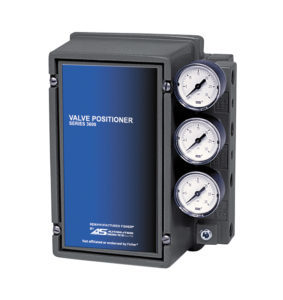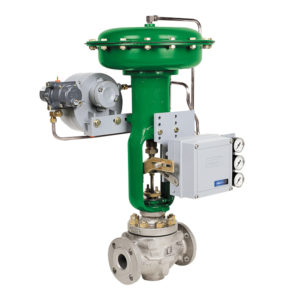 A few months ago, we published an article on the benefits of control valve positioners. But while positioners can provide faster and more accurate control of your valves, they aren’t always necessary.
A few months ago, we published an article on the benefits of control valve positioners. But while positioners can provide faster and more accurate control of your valves, they aren’t always necessary.
Every control valve application is different, and several factors go into determining whether or not a positioner will drive better performance from your control loop. Here, we’ll dig into some of these factors to help you decide if you need a control valve positioner.
When positioners help…and when they don’t
Control valves don’t require positioners to operate. What positioners do is make the valve response faster and more accurate. So, while there are no hard and fast criteria for when a positioner is indicated, you should start by asking yourself two questions:
- Do you need a faster response?
- Do you need a more accurate response?
If the answer to either of those questions is “yes,” then a positioner might be just the thing.
Let’s look at a few examples.
Example: When positioners help
We recently completed a project with oil producer Trinity EOR. Their systems were frequently going down because the control valves on their inlet lines weren’t performing well enough to keep the compressors from overloading.
It was a textbook example of when positioners are indicated because two valves were performing the same function from two different feeds in the plant and they needed to work together. In addition to making some other improvements, we installed positioners to give the valves more accurate responses and keep them working in concert.
Example: When positioners don’t help
There are also plenty of applications where positioners don’t add any performance improvement to the overall loop response.
One is a forgiving process that doesn’t require a tight setpoint, such as where you’re using a control valve to hold a level in a tank. You don’t want the tank to overflow or to become empty, but, between those two extremes, the exact level doesn’t matter.
Another example is very big and inherently slow processes, like where you’re trying to fill 16 miles of pipeline with natural gas. In this case, movement of the valve will take some time to have an effect anyway, so moving the valve faster won’t make much of a difference.
Other factors to consider
The need for speed and/or accuracy isn’t the only factor that comes into play. You also need to consider the following:
- The type of control valve
- The controller tuning
- The overall process dynamics
- The rest of the control loop (i.e., beyond the transmitter/controller/control valve assembly)
- How the loop is responding (for existing loops)
All of these factors can influence whether a positioner will improve performance in your application.
So, do you need a control valve positioner?
Ultimately, the answer isn’t straightforward. You need to understand the process, what you want to achieve, and how the equipment works.
If you need support with any of these things, we’re here to help. Our engineers have many decades of experience helping companies like yours identify inefficiencies and boost plant performance. Get in touch with our team of process control experts.

